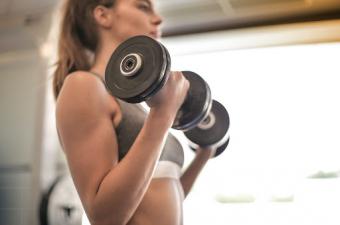Lifting MythBusting
Sometimes the idea of lifting weights can be intimidating. The problem only compounds when we hear myths and misconceptions about lifting weights and what it will do to our body. Read on to clear up some of these myths and get your lifting on!
Myth: Lifting makes women bulky.
False. Women do not naturally bulk up. Lifting weights between the ages of 18-26 actually reduces a woman’s chances of getting osteoporosis after menopause because lifting helps increase bone density. While it is true that lifting weights will lead to bigger, stronger muscles, it will not lead to a “bulky” look.
Myth: Lifting makes you overweight/is not helpful for weight loss.
False. Lifting increases your amount of fat-free muscle mass (muscle) which has been shown to turn a 24-hour energy burn! Muscles require more calories for upkeep, and because of this they also burn more calories than fat. Resistance training plays a role in weight management.
Myth: Exercising one area of the body (spot reduction) will make you lose fat in that area.
False. The body pulls energy from fat deposits that are found all over the body. In a study by the Journal of Strength and Conditioning, they saw an equal loss of body fat from the whole body even though they focused on one leg. Instead of trying to reduce the fat in one area of the body, focus on targeting a part of the body to strengthen.
Myth: I can just get “tone” if I don’t want to gain muscle.
False. There is no such thing as toning a muscle. Lean muscle tissue is created by lifting. When you lift, you create micro-tears in your muscle fibers and when they heal, they grow back bigger and stronger. Over time with enough consistency, you will start to notice your muscles getting bigger and creating the “toned” look, but that’s just muscle mass you’ve gained.
Myth: I will only burn fat at my target heart rate.
False. Your body will always burn both carbohydrates and fat during exercise. Although it is true that you can burn mostly fat at a 70% of your heart rate, you actually burn fat slower than if you were to do high-intensity exercise like HIIT (high intensity interval training), where you are primarily burning fat. Focus on moving your body, and the fat burn will come.
